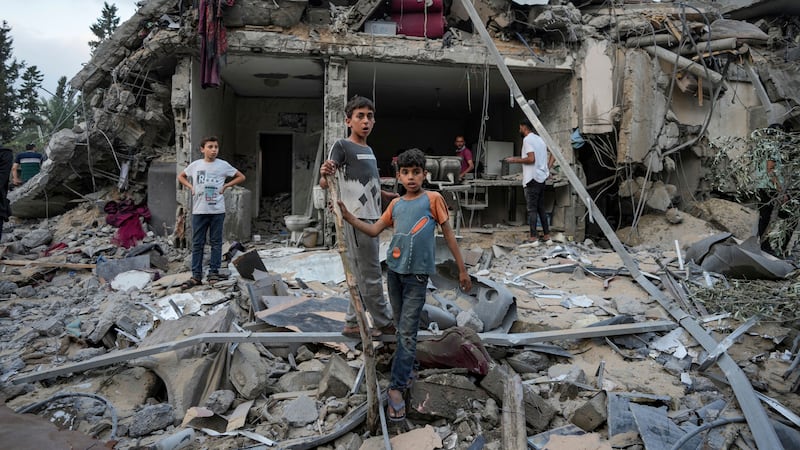A Belfast-born author living in Paris has described how tensions in the French capital are worse than scenes he witnessed during the Troubles.
Robert McLiam Wilson, who grew up in Turf Lodge, has told of how despite growing up "in the hottest of hot times in Belfast", the atmosphere in Paris is "more tense, more filled with suppressed rage and hatred".
It comes as the French capital witnessed a sixth night of unrest, sparked by the police shooting of a 17-year-old boy.
Nahel, the teenager killed last Tuesday, was of Algerian descent and was shot in the Paris suburb of Nanterre.
According to the French Interior Ministry, on Sunday there were 157 arrests, down from a peak of 3,880 last Friday night, and two police stations were attacked, among other damage.
Around 45,000 officers were deployed nationwide to counter violence fuelled by anger over discrimination against people who trace their roots to former French colonies and live in low-income neighbourhoods.
Across France, 297 vehicles were torched overnight, along with 34 buildings.
Read more:
President Macron holds talks as unrest continues in France
Grandmother of dead teenager calls for an end to the violence in France
Travellers to France advised not to cancel trips but to avoid cities at night
A burning car struck the home of the mayor of the Paris suburb L'Hay-les-Roses over the weekend, an unusually personal attack amid the backdrop of fires and vandalism targeting police stations and town halls.
Mr McLiam Wilson, who moved to Paris 15 years ago and writes for the French satirical weekly magazine Charlie Hebdo, spoke about the tensions in the city following the death of the teenager.
“Everyone knew immediately that the banlieues (the under-privileged suburbs) would erupt in some kind of protest and rioting,” the Ripley Bogle author told The Belfast Telegraph.
“The same thing happened in 2005 after two kids were electrocuted while running away from the police.
“There is a lot more arson and looting this time — this could be because of the social media videos of US unrest of the last couple of years.”

The writer added: "I grew up in the hottest of hot times in Belfast, but Paris has always struck me as more tense, more filled with suppressed rage and hatred.
“I’ve been attacked a lot more in Paris than Belfast or London. It can often feel like everyone hates everyone else.
“You don’t have to scratch hard to find it, particularly if you have a foreign accent like mine — people will delight in explaining to you how to avoid black/white/brown areas.
"There is huge cultural denial of this tension. Except among the working class.”

Mr McLiam Wilson, a former pupil of St Malachy's College in Belfast, also said while the situation is serious, coverage can be sensationalised.
“Burning cars look amazing on TV but riots are remarkably undangerous to life and limb," he said.
"They’re more slow-moving than tortoises — incredibly easy to skirt around, if you’re not a lorry driver or a bus driver, that is. Not all the kids doing it are wicked demons.
"I was chucking ‘halfers’ at the army when I was eight or nine and I ended up going to Cambridge," he said.
"I’ll never forget seeing a burning car outside the Rangers’ Supporters Club on Sandy Row, an excited phalanx of foreign photojournalists surrounding it, clicking away.
“But none of the pictures showed the row of backpackers behind them sitting on the low wall of the youth hostel, watching it all like it was Christmas.”




